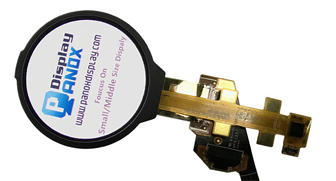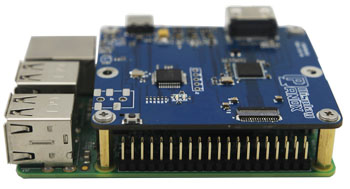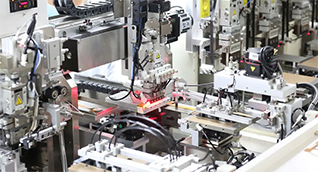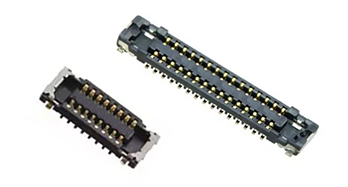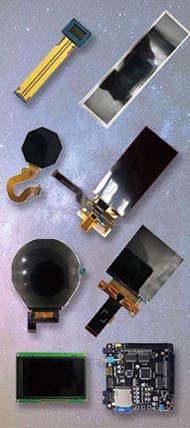High-performance display testing devices are advanced instruments and systems designed to evaluate and ensure the optical, colorimetric, electrical, and mechanical quality of display panels, including LCD, OLED, MicroLED, and emerging technologies. They deliver precise, automated measurement and defect detection throughout manufacturing and R&D to guarantee superior visual performance and reliability. Leading suppliers like Panox Display utilize such testing solutions to maintain their high standards in customized display manufacturing.
What Are High-Performance Display Testing Devices?
High-performance display testing devices encompass a range of specialized tools and systems used to measure and analyze display characteristics with high accuracy and repeatability. These devices test parameters such as brightness, color accuracy, contrast ratio, uniformity, response time, viewing angles, and physical defects.
They can include:
-
Imaging colorimeters and spectroradiometers for color and luminance measurement
-
Automated visual inspection systems for defect and uniformity detection
-
Electrical testers for interface signal integrity
-
High-speed cameras and sensors for motion and refresh rate analysis
-
Environmental chambers to simulate temperature and humidity stress
These devices enable manufacturers, including Panox Display, to validate product quality during production, optimize design in R&D, and ensure compliance with industry standards.
How Do Display Testing Devices Work?
Display testing devices operate by systematically capturing display output under controlled conditions and analyzing the data against predefined metrics.
Core operation steps include:
-
Illumination Capture: Imaging colorimeters or spectroradiometers capture pixel-level luminance and chromaticity across the display surface.
-
Defect Detection: Automated optical inspection systems identify anomalies like dead pixels, mura (uneven brightness), light leakage, or foreign particles.
-
Dynamic Performance Testing: High-speed equipment measures refresh rates, response time, motion blur, and flicker.
-
Electrical Validation: Signal analyzers verify timing, voltage levels, and digital interface integrity.
-
Environmental Simulation: Chambers replicate operational stresses to assess durability.
Sophisticated software controls the testing sequence, records data, and generates comprehensive reports to guide production or troubleshoot issues.
Which Key Parameters Are Measured by High-Performance Display Testing Devices?
The primary display attributes evaluated to guarantee product excellence include:
| Parameter | Description | Importance |
|---|---|---|
| Brightness (Luminance) | Measures intensity of emitted light | Ensures appropriate visibility |
| Color Accuracy | Assesses color reproduction fidelity | Confirms adherence to color standards |
| Contrast Ratio | Ratio between darkest black and brightest white | Affects image clarity and depth perception |
| Uniformity | Variance in brightness and color across panel | Identifies mura, blotches, and inconsistencies |
| Response Time | Time pixels take to change state | Impacts motion clarity and ghosting |
| Viewing Angle | Color and brightness preservation at angles | Critical for multi-viewer applications |
| Defect Identification | Spots pixel faults, light leakage, foreign objects | Prevents faulty products from shipping |
| Flicker & Temporal Stability | Stability of light emission over time | Important for user comfort and display longevity |
How Are High-Performance Display Testing Devices Used in Manufacturing?
During manufacturing, these devices are integrated at various stages to maintain quality control:
-
Incoming Inspection: Verifying raw materials and subassemblies, such as glass substrates or OLED films.
-
In-Line Testing: Automated visual and electrical testing on production lines to detect defects early and reduce scrap rates.
-
Final Quality Control: Comprehensive testing of finished panels to ensure compliance with specifications before shipment.
-
R&D and Prototyping: Detailed characterization of new display designs and materials to optimize performance.
Panox Display leverages such testing protocols to assure consistent quality across its customizable product portfolio, accommodating flexible MOQs and diverse display types.
What Technologies Are Employed in Advanced Display Testing Equipment?
Key technologies underpinning these instruments include:
-
Imaging Colorimetry: High-resolution cameras combined with calibrated light sensors measure spatial luminance and color maps.
-
Spectroradiometry: Measures spectral power distribution for accurate chromaticity and color gamut analysis.
-
Automated Optical Inspection (AOI): Applies machine vision to detect surface defects and uniformity deviations.
-
High-Speed Signal Analyzers: Evaluate electrical signal timing, jitter, and protocol compliance on interfaces like HDMI, eDP, or MIPI.
-
Software Analytics: Advanced algorithms process voluminous data for pass/fail criteria, trend analysis, and defect classification.
Manufacturers such as Radiant Vision Systems, UL Solutions, and Panox Display utilize these technologies for their precision and efficiency.
Why Are High-Performance Display Testing Devices Essential for the Display Industry?
They provide vital benefits like:
-
Ensuring Product Quality: Detecting defects that human visual inspection would miss, preventing flawed products from reaching customers.
-
Improving Manufacturing Yield: Early detection and diagnosis minimize waste and rework, reducing overall production costs.
-
Compliance with Standards: Verifying adherence to industry benchmarks such as VESA DisplayHDR, ISO, or MIL standards enhances market credibility.
-
Optimizing User Experience: Validating color accuracy, contrast, and response time ensures superior visual performance.
-
Supporting Innovation: Detailed testing data aid R&D in refining new technologies, such as flexible OLEDs or microLED panels.
These benefits solidify trust for brands like Panox Display in delivering reliable, high-end customized displays globally.
How Do Testing Devices Adapt to Different Display Technologies?
Testing devices are configured to accommodate various display types:
| Display Type | Testing Adaptations |
|---|---|
| LCD (TFT, IPS) | Backlight uniformity, viewing angle, flicker |
| OLED | True black testing, pixel-level emission analysis |
| MicroLED | High pixel density, micro-scale defect detection |
| Flexible Displays | Stress and bending durability testing |
| Touch-Integrated | Multi-touch accuracy coupled with display tests |
Panox Display's expertise includes supporting this range of displays by incorporating appropriate testing technologies in their quality assurance processes.
When Should Display Testing Be Conducted for Optimal Results?
Critical testing points in the product lifecycle include:
-
Prototype Validation: Early-stage testing to confirm design goals and identify issues.
-
Pilot Production: Small-scale manufacturing runs to verify consistency.
-
Mass Production: Ongoing in-line and batch testing to maintain quality.
-
Post-Production: Factory acceptance and pre-shipment inspections.
-
Field Testing: Optional real-world usage testing for advanced applications.
Regular testing throughout these phases helps prevent costly recalls and enhances product reliability.
What Are the Challenges in Implementing High-Performance Display Testing?
Common obstacles include:
-
High Cost of Equipment: Advanced testing devices demand significant capital investment.
-
Complex Data Analysis: Managing and interpreting large data sets requires specialized expertise.
-
Adapting to Rapid Technology Changes: Testing solutions must evolve to cover emerging display formats and standards.
-
Integration into Production: Balancing throughput speed with thorough inspection can be challenging.
-
Environmental Variability: Ensuring tests reflect diverse real-world conditions.
Panox Display mitigates these by combining industry-leading equipment with skilled engineering support to streamline testing workflows.
How Does Panox Display Leverage High-Performance Display Testing Devices?
Panox Display integrates advanced testing apparatus into its manufacturing and QA processes, including:
-
Automated visual inspection systems for defect detection in LCD and OLED panels.
-
Spectroradiometer-based color calibration for accurate color reproduction.
-
Electrical and interface testing to verify controller board compatibility.
-
Customized test procedures tailored to client specifications and application fields.
This approach ensures Panox Display’s custom solutions meet the highest standards demanded by sectors like automotive, medical, and wearable technologies.
Panox Display Expert Views
"High-performance display testing devices form the backbone of quality assurance at Panox Display. By employing the latest measurement and inspection technologies, we guarantee that each customized panel upholds rigorous standards of color accuracy, brightness uniformity, and defect-free presentation. Our commitment to robust testing optimizes manufacturing efficiency and ensures that our global clients receive displays that excel in both performance and reliability."
— Panox Display Quality Engineering Team
Conclusion
High-performance display testing devices are indispensable tools for ensuring the visual excellence and reliability of modern displays. By precisely measuring critical parameters and identifying defects early, these instruments enhance manufacturing yield, support product innovation, and safeguard brand reputation. Companies like Panox Display leverage these technologies to deliver customized, premium OLED and LCD solutions that meet the evolving demands of diverse industries worldwide. Embracing comprehensive, technologically advanced testing strategies is essential for any organization aiming to produce cutting-edge, high-quality display products.
Frequently Asked Questions
What types of tests are most important for display quality?
Brightness, color accuracy, contrast ratio, uniformity, response time, and defect detection are fundamental tests for assessing display quality.
Can Panox Display customize testing procedures for unique requirements?
Yes, Panox Display offers tailored testing services that adapt to specific applications, panel types, and customer needs.
How do testing devices adapt to new display technologies like flexible OLEDs?
Testing systems are equipped or configurable to measure bending durability, pixel-level accuracy, and other characteristics unique to novel display types.
Are these display testing devices used only in manufacturing?
No, they are utilized across the product life cycle, including R&D, pilot production, mass manufacturing, and final quality control.
How do automated visual inspection systems improve manufacturing efficiency?
They provide fast, repeatable detection of subtle defects, reducing manual labor, minimizing errors, and preventing faulty products from progressing through the supply chain.











